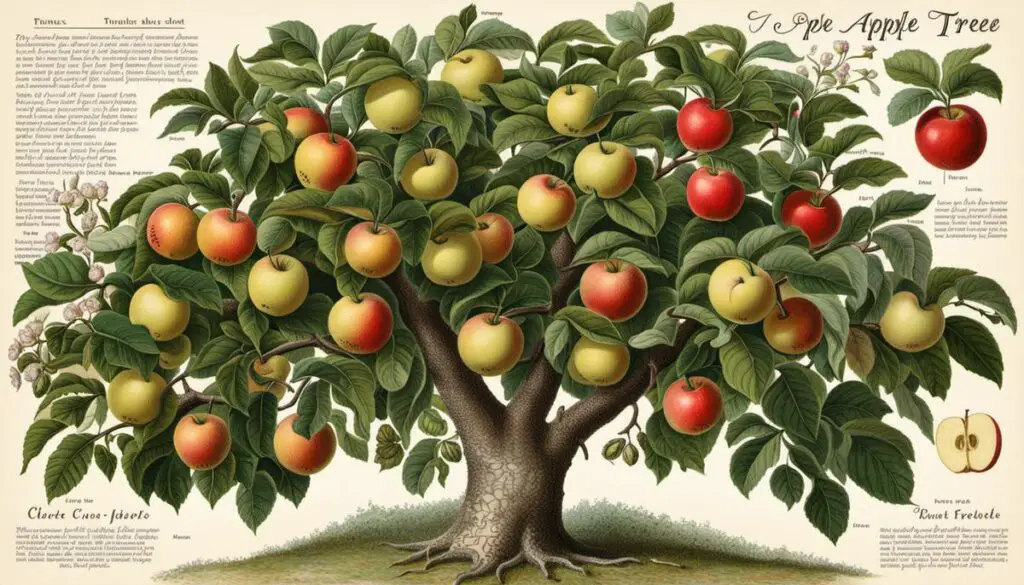Apple trees, with their myriad fruit-bearing varieties, are one of the most recognizable tree species worldwide. Their vibrant flowers, crisply textured bark, and of course, delectable fruits, make them a subject of interest among gardening enthusiasts, fruit growers, and nature admirers. This information piece aims to provide comprehensive insights into the world of apple trees. We explore basic facts about these incredible plants—their biology, maturation stages, and varied species across distinct regions—before delving into their identification based on physical attributes: leaves, bark, shape, flowers, and fruits. Moreover, it provides an understanding of the potential misidentifications to be weary of, while giving practical tips to navigate these complexities.
Basics of Apple Trees
Apple trees
Apple trees (Malus domestica) are fruiting trees that belong to the Rosaceae family. They are small to medium-sized, usually standing at 15 to 30 feet in height. The apples produced by these trees are widely consumed worldwide and are used for cooking, juicing, and eating raw. Apple trees grow best in well-drained soils with full sunlight exposure and are most commonly cultivated in North America, Europe, and China.
Biology of Apple Trees
Apple trees have leaves of medium to dark green color in the summer. The leaves are alternately arranged on the branches of the tree and are oval in shape with pointed tips, with a wavy or serrated margin. In the spring, apple trees typically produce pink to white blossoms with five petals each, before the fruits appear. These flowers are pollinated primarily by bees, which play a crucial role in fruit production. Apple fruits vary widely in size and color, depending on the specific variety, but usually have a characteristic round shape.
Growth Stages
Apple trees, like all other fruit trees, have a specific growth and fruiting cycle. In the spring, the trees come out of their dormant winter state and start to grow new leaves and blossoms. After the process of pollination, the blossoms fall off, and the fruit begins to grow. This period usually lasts from the end of spring until late summer. The apples reach full maturity by early to mid-fall, signified by changes in color and firmness.
Each apple tree variety has a different maturation timeline, so farmers must understand their specific tree species’ requirements. Additionally, maintaining a routine of proper pruning, fertilization, and pest control can significantly affect the yield and health of the tree.
Common Apple Tree Species Across Different Regions
There are thousands of apple tree species across the world, but a few stand out for their popularity and unique characteristics.
- The ‘Red Delicious’ apple tree is one of the most widely known and grown in North America. Highly prized for its sweet flavor, it produces deep red, juicy apples. It is also valued for its resistance to diseases and pests, making it a favorite for many orchards.
- The ‘Granny Smith’ apple tree is another popular variety, originating from Australia. The apples produced are green, crisp, and tangy, making them a favorite for pies and other baked goods.
- In Europe, where apple cultivation has a long history, popular varieties include the ‘Cox’s Orange Pippin’, a British native tree that produces small, orange-red apples with a rich, sweet flavor, and ‘Golden Delicious’, known for its versatility in cooking and fresh consumption.
- Chinese farmers favor the ‘Fuji’ apple tree, introduced from Japan. The fruit is large and has a balanced sweet-tart flavor. It stores well, which makes it a favorite for export.
Getting Acquainted with Apple Trees
Recognizing the different types of apple trees isn’t just about their fruit. Having a fundamental understanding of their biology and growth cycles can significantly aid in identifying apple trees successfully.
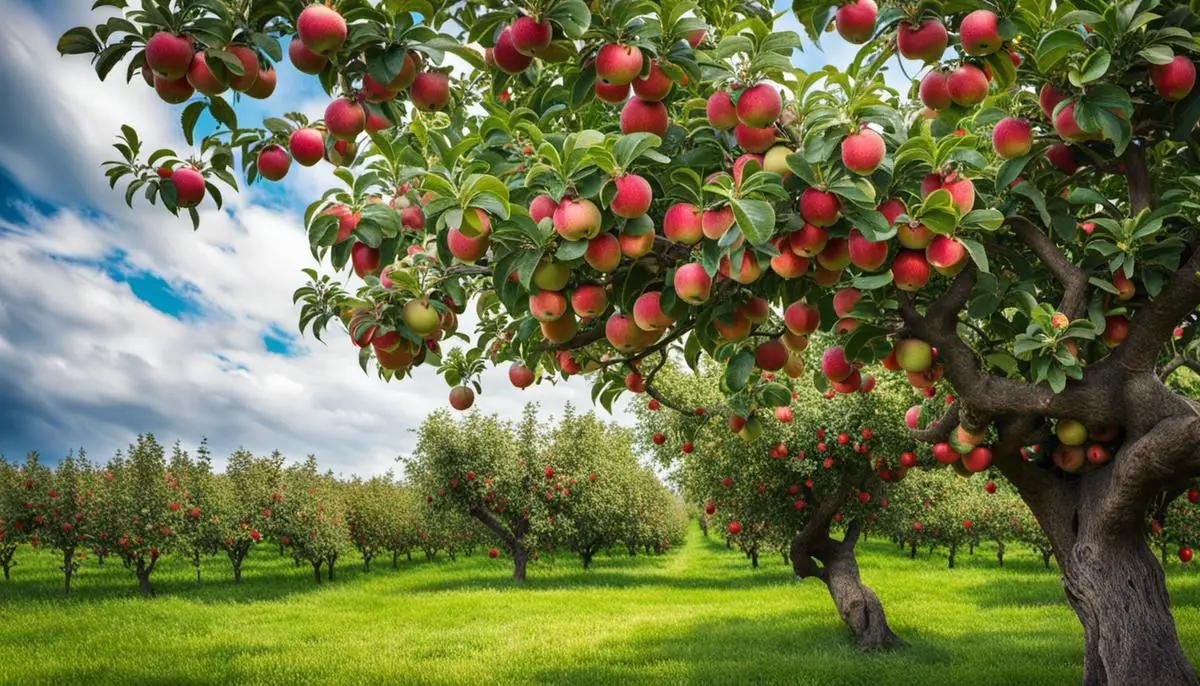
Features for Identification
Focusing on Leaf Identification
Start your apple tree identification process by examining its leaves, one of their primary distinguishable features. Typically, the leaves of an apple tree are simple, alternate and exhibit an oval shape with slightly serrated edges. The length usually varies from 1.5 to 3 inches, featuring a pinnate vein pattern with 5 to 9 veins on either side of the main vein. The color spectrum can range from a somewhat pale green to a rich glossy green, depending on the tree’s health and age. As autumn comes around, these leaves put on a vibrant show of red, orange, and yellow hues.
Bark and Trunk
The bark and trunk of the apple tree also provide clues for identification. When young, apple trees have a smooth, grayish-green bark. As the tree ages, the bark turns a darker gray and becomes rough and scaly, characterized by deep fissures and prominent ridges. The trunk is relatively short with a broad, spreading shape that often appears gnarled due to heavy pruning.
Tree Shape
As the apple trees mature, they develop a distinctive overall structure. They generally have a rounded top, or “crown,” and a branching habit that tends to spread horizontally, often wider than they are tall. The branches twist and turn, often creating a dense, tangled appearance.
Apple Flowers
Flowering patterns are another critical factor for apple tree identification. Apple blossoms bloom during the spring and are about one inch in diameter. They consist of five petals that are typically white with a pink tinge. These blossoms grow in clusters of four to six and have a pleasant fragrance.
Apple Fruits
Come autumn, the fruits are the most apparent identifying feature of an apple tree. The fruit size, color, and taste can vary widely by variety, but generally, apples tend to be round with a slight taper towards the bottom. They range in color from shades of red and pink to green and yellow depending upon the variety. The presence of a star-like structure at the bottom of the apple is also a key identifier.
Recognizing Apple Trees
Apple trees are distinguishable due to their medium-paced growth and considerable size, as they are known to reach heights of 20 to 40 feet upon full maturity. They are deciduous in nature, shedding their leaves on a yearly basis as the seasons shift. This leaf dropping process not only symbolizes seasonal change, but also aids in identifying these trees, particularly as they begin to blossom or as their fruit starts forming.
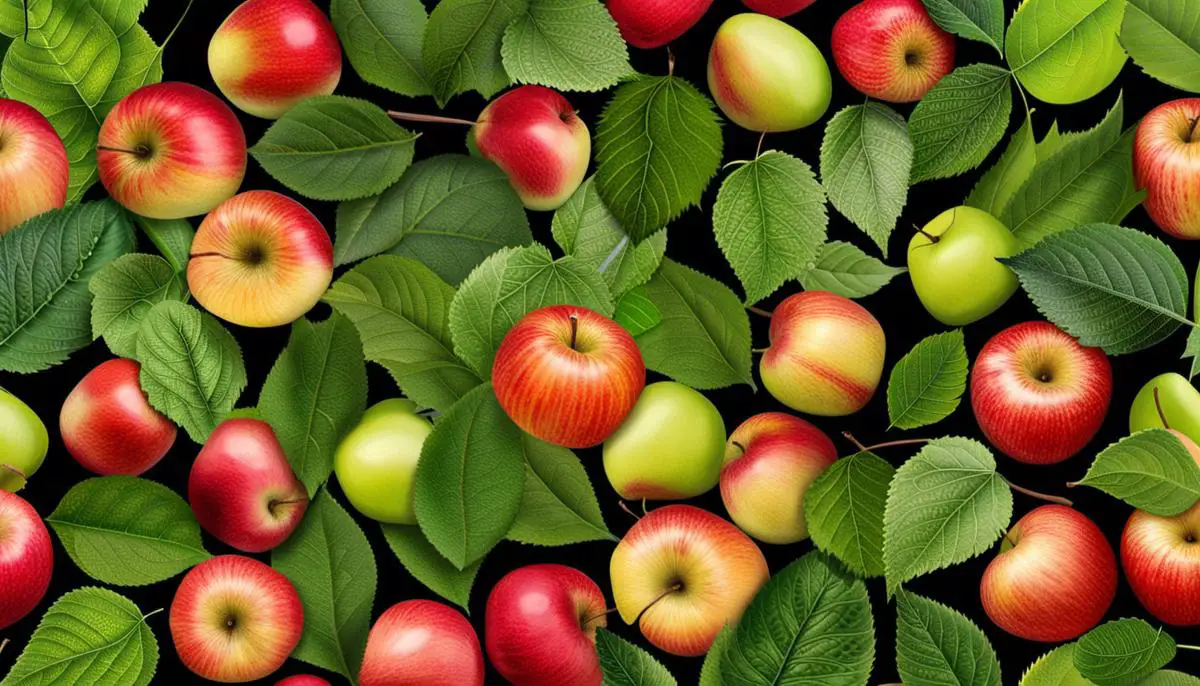
Common Types of Apple Trees
Spotting Red Delicious Apple Trees
Famed for their characteristic heart shape and vibrant red exterior, Red Delicious apple trees are hard to miss. The apples yielded by these trees vary from medium to large in size and carry a predominantly sweet flavor profile, tinged with a hint of tartness. These apple trees are typically seen thriving in regions characterized by mild spring temperatures and chilling winter lows, making them widespread in zones like the mid-western and north-eastern parts of the United States.
Granny Smith Apple Trees
Granny Smith apple trees yield apples with a distinct bright green skin that gives off a glossy shine. The apples are firm and have a tart, crisp flavor that makes them perfect for baking. This tree variety grows best in cooler climates and is resistant to most common diseases. It has a high productivity rate and can be found extensively in Washington, New York, and Oregon, among other states.
Honeycrisp Apple Trees
The Honeycrisp apple tree is renowned for its apples’ unique texture. The skin is decorated with streaks of red over a yellow-green base and the interior flesh is incredibly juicy and crisp, emitting a sweet-tangy flavor. These apples are well-suited for raw consumption or cooking. Ideally, Honeycrisp apple trees need a mix of hot days and cool nights for the best growth, making them suitable for cultivation in regions like Minnesota, New York, and Michigan.
Fuji Apple Trees
Fuji apples are a Japanese breed famously known for their sweet flavor and long shelf life. The skin is an attractive mix of red blush over a yellow-green color. Fuji apple trees thrive in both warm and cold climates and can be found growing in different regions of the United States, such as Washington, California, Pennsylvania, and Virginia.
Golden Delicious Apple Trees
Golden Delicious apple trees produce apples that are primarily sweet with a small touch of tartness. The apples are medium to large with smooth, golden yellow skin. Highly versatile, these apples serve multiple culinary purposes, whether consumed raw, used in baking, or making cider. Favoring both mild summer and winter climates, Golden Delicious apple trees are grown widely in regions like West Virginia, Washington, and California.
Gala Apple Trees
Gala apple trees produce apples that are small to medium in size, with a skin that exhibits a lovely blend of pink-orange stripes over a yellow background. The apples are extremely sweet and juicy, ideal for eating fresh or for juicing. Gala apple trees thrive in warmer climates and are cultivated extensively in Washington, California, and New York.
Identifying McIntosh Apple Trees
Identifying the McIntosh apple tree is quite straightforward. It’s famed for its conventional apple appearance, namely round, red apples with a splash of green. What sets it apart is its tangy flavor, perfect for those who enjoy biting into a fresh apple, baking, or even preparing their own apple cider. These trees particularly thrive in colder climates, such as the northeastern regions of the United States; they’re a common sight in places like New York and New England.
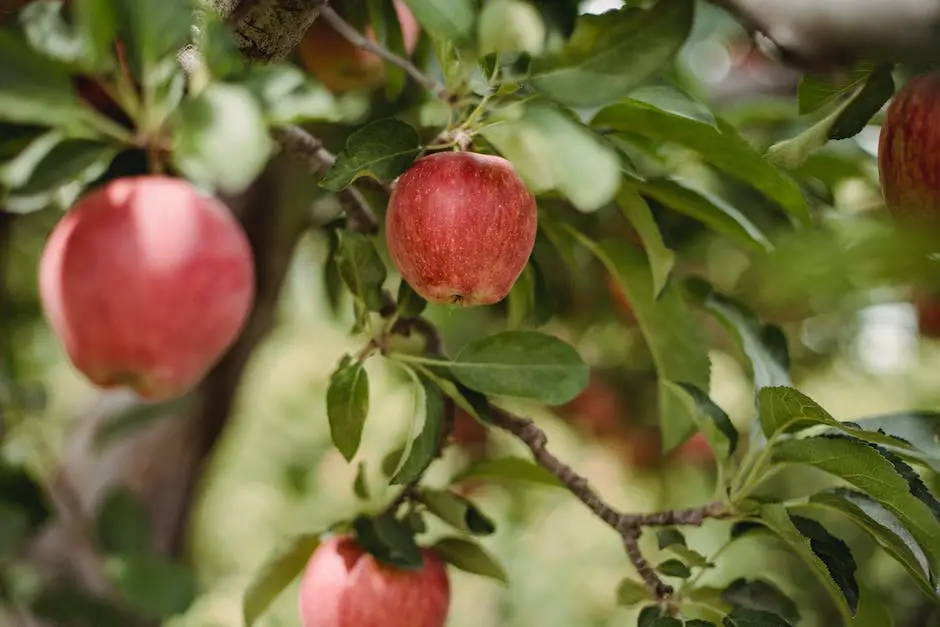
Potential Misidentifications and Their Solutions
Avoiding Common Misidentification Mistakes
While apple tree identification might seem straightforward, there are some common errors to look out for. For example, apple trees are often mistaken with pear trees. This mix-up is not surprising since both trees blossom in the spring, and their medium-sized fruits dangle similarly from the branches. However, the key to distinguishing them lies in their leaves; pear tree leaves possess a shinier surface and have a more elongated shape in comparison to apple tree leaves.
Another frequent source of confusion is between apple and cherry trees. Their clustered, white blooms can indeed be misleading. However, pay attention to their blooming patterns and leaf structure and it becomes more straightforward: cherry tree flowers tend to appear earlier in spring than apple blossoms, and cherry leaves have a unique serrated edge, a characteristic absent in apple trees. Recognizing these potential misconceptions can assist in correctly identifying apple trees from their arboreal relatives.
Tips to Differentiate Apple Trees
To accurately identify an apple tree, there are a few features to take into account. Apple trees have simple, broad leaves with serrated edges. The leaves are a bit shiny on top and soft underneath. In the spring, apple trees show off their pink or white blossoms that have five petals each. The fruits are a key identification feature; they vary in color from green, yellow to several shades of red and usually ripen in late summer through fall.
Unlike apple trees, plum trees have darker colored bark and their leaves are short and usually have a pointy end. Peach trees have long, slender leaves with serrations and their fruit has a velvety texture, while apple skins are smooth.
Clarifying Common Misunderstandings in Apple Tree Identification
It is a frequent fallacy to believe that every apple tree yields edible fruit. Indeed, this is not the reality. For instance, crabapple trees, while they are a variety of apple trees, generate small, hard apples, which are usually not eaten directly from the tree.
Similarly, there is a common perception that apple trees solely bear red fruit. On the contrary, apple trees can produce a spectrum of fruit colors. Proper identification hinges on a thorough look at not just the fruit, but other components including the texture of the leaves, the bark, and the flower’s formation and hue.
Recognizing the unique features of the apple tree – such as its flowers, fruit, leaf form, and bark – and contrasting these with other fruit trees can alleviate prevalent complications and inaccuracies in apple tree identification. Understanding each tree’s growth patterns and the fruit’s ripening cycle is another critical aspect for precise identification.

Practical Tips for Identification
Distinguishing Apple Trees
Apple trees encompass a broad range of species, each distinctive in attributes like their leaves, bark, flowers and, indeed, their fruit. Apple trees commonly have leaves with a rounded base and a pointed tip, finely serrated edges, and colors that range from a lighter to a darker green. The bark is primarily rugged with a pattern of ridges and furrows, exhibiting a shade anywhere between gray to brown.
One of the key distinguishing features of apple trees is their flowers. They typically bloom in spring, exhibiting five-petaled flowers that can span a spectrum of colors from white to pink. These delightfully attractive flowers not only add aesthetic appeal, but they also magnetize pollinators including bees and butterflies.
The fruit that grows from late summer to the onset of fall encompasses a vast array of characteristics in terms of size, shape, color, and flavor, depending on the apple tree variety. This spans from the widely recognized red hue of the Red Delicious, to the yellow of the Golden Delicious, to the green shade of the Granny Smith.
Best Time for Apple Tree Identification
The best time for apple tree identification is usually mid-spring to late summer when the apple tree is in full bloom or when it starts to bear fruit. This is due to the fact that the flowers and fruits provide unique identification features that are not present or not as distinct during other seasons. Winter can make identification difficult as apple trees lose their leaves and do not bear fruit.
Using Mobile Apps for Apple Tree Identification
One effective approach for identifying apple trees is using mobile apps. There exist many apps such as PlantSnap, PictureThis, and iNaturalist that are effective in identifying apple trees based on a photo of the tree, its leaves, or its fruit. These apps use advanced machine learning algorithms that can compare your photos to thousands of sample photos in their database, making apple tree identification quick and reliable.
Local Tree Identification Workshops
Taking part in local tree identification workshops can greatly assist in your quest to identify apple trees. Here, you can learn from experienced botanists or arborists about more complex identifying characteristics that may not be noticeable to the untrained eye. Hands-on sessions can give you direct experience with apple trees and their various species, further enhancing your knowledge for identification. Depending on your location, checking with local community colleges, gardening clubs, or horticulture societies can provide information about nearby workshops.
Field Guides
Another practical method of identifying apple trees is through field guides. Field guides give detailed information and visual examples about different apple tree species’ characteristics. They may include in-depth and visual details about leaves, flowers, fruits, and bark patterns. They often provide a dichotomous key, a tool that lets you determine the identity of a tree by answering a series of yes-or-no questions.
Conclusion
In conclusion, apple tree identification can be approached through various methods like observing the tree in different seasons, using mobile apps, participating in local workshops, and studying field guides. Developing an eye for detail and getting hands-on experience will further enhance your identification skills.
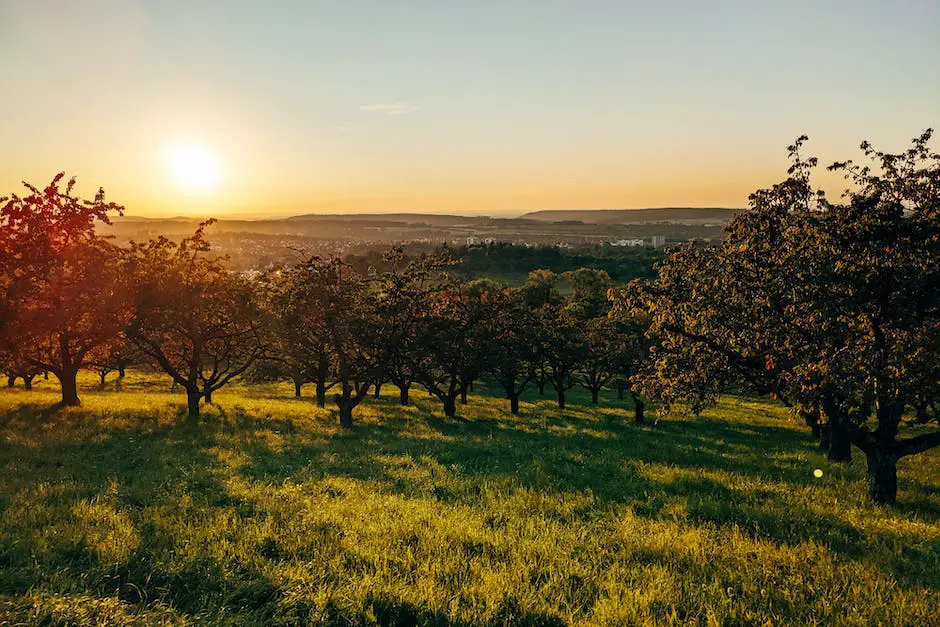
In the journey of apple tree identification, paying attention to the nuances of physical characteristics, understanding their growing conditions, and being aware of common misidentifications is key. To deepen your experience, we recommend applying these practical tips in real-life scenarios. Explore these trees in different seasons to perceive their evolutionary stages. Harness technology by using mobile applications specifically made for tree identification, or better yet, participate in local identification workshops to gain hands-on experience. Embark on this fascinating exploration of nature’s bounty and gear up to appreciate the subtleties of apple trees in an entirely new light. Remember, the world of nature is vast, and there’s always something new to learn and discover.
